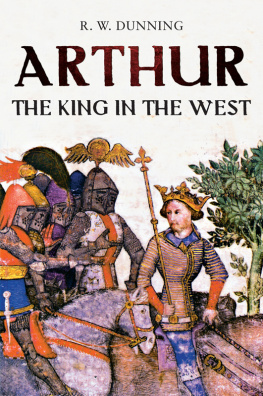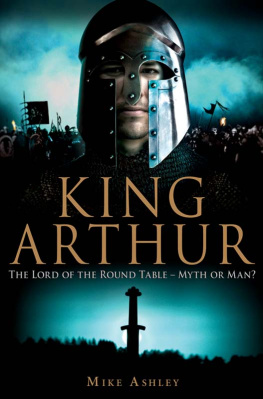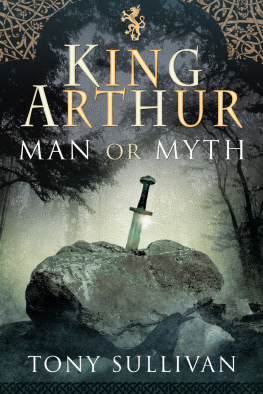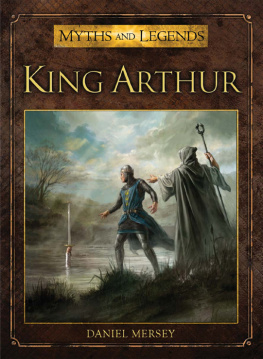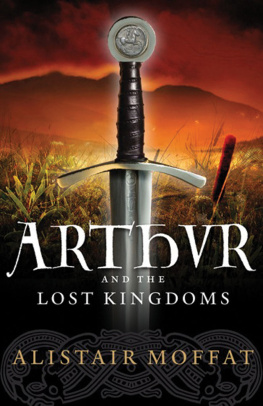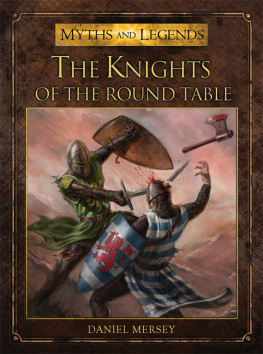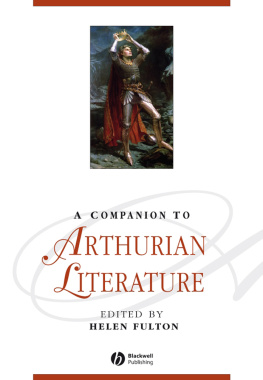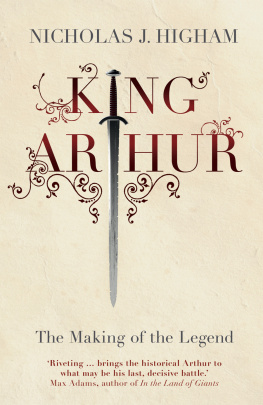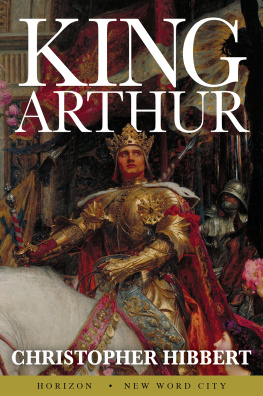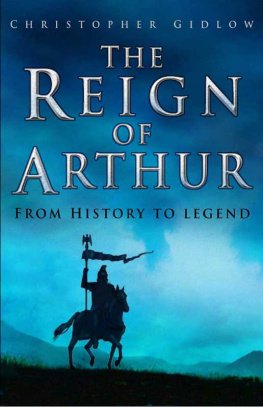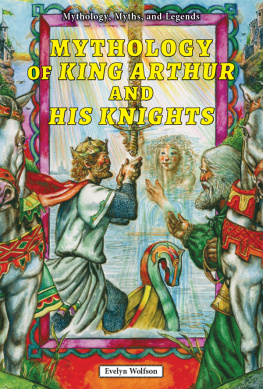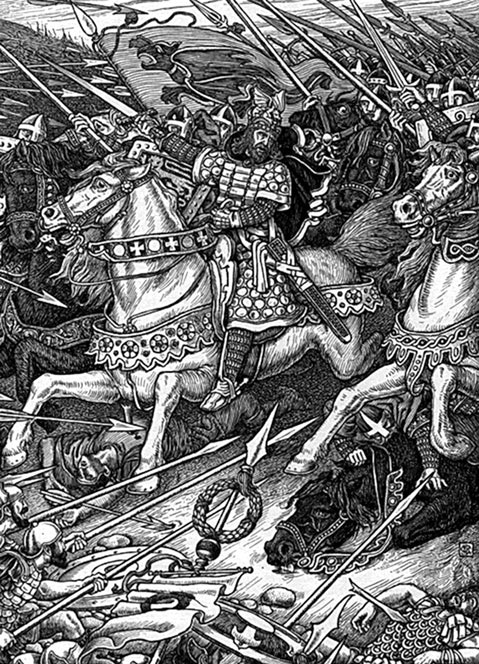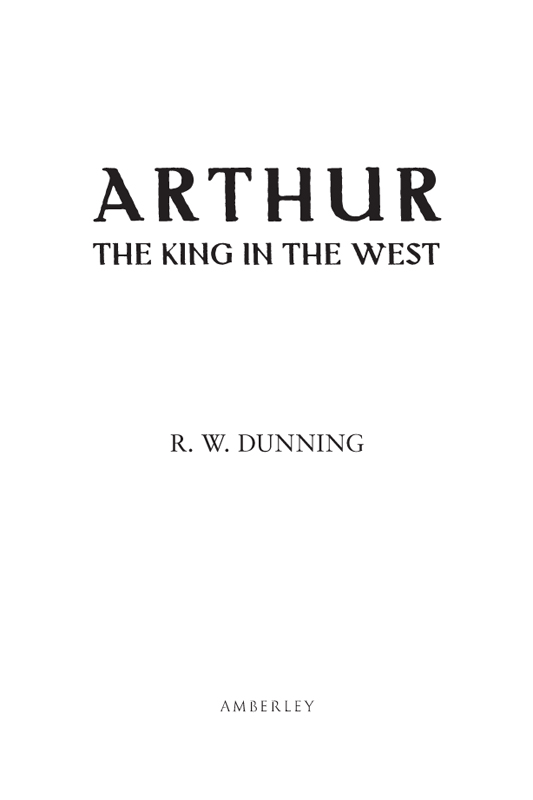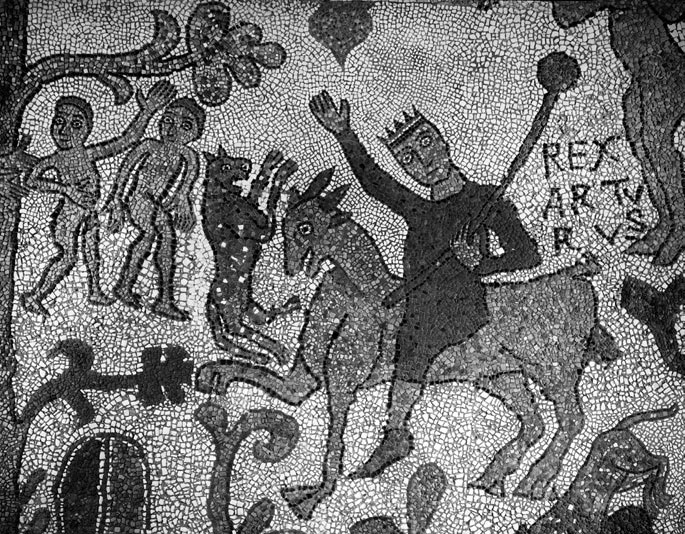An engraving by George Wooliscroft Rhead and Louis Rhead, Arthur Leading the Charge at Mount Badon from Alfred Lord Tennyson, Idylls of the King, 1898.
This electronic edition published 2013
Amberley Publishing
The Hill, Stroud, Gloucestershir
GL5 4EP
www.amberley-books.com
Copyright R. W. Dunning 2009, 2013
ISBN 9781848682429 (PRINT)
ISBN 9781445624778 (e-BOOK)
All rights reserved. No part of this book may be reprinted or reproduced or utilised in any form or by any electronic, mechanical or other means, now known or hereafter invented, including photocopying and recording, or in any information storage or retrieval system, without the permission in writing from the Publishers.
British Library Cataloguing in Publication Data.
A catalogue record for this book is available from the British Library.
CONTENTS
INTRODUCTION
The story of King Arthur and the Knights of the Round Table has a fascination which is universal. It has attracted sculptors and painters, poets and writers of fiction, printers and typographers, musicians and dramatists, philosophers and scientists. Product of the Celtic world, it embraced in the Middle Ages the Romance of France and Italy and the Teutonic themes of Northern Europe. It was the inspiration of the Gothic Revival in 19th-century England, and its following is as strong today in California as it is in Western Europe.
But the story is not only popular; it is controversial. Historians take diametrically opposed views on its central figure, Arthur, for the written sources are few and difficult to interpret with certainty. Archaeologists are inclined to be tentative about the significance of artefacts from the Dark Ages. Both depend on legends whose age is often unknown, whose importance is often uncertain, whose veracity cannot as yet be tested by traditional disciplines.
Yet because the story is so popular, it suffers from being over-simplified. Did Arthur really exist? is a common question, but one that cannot and should not be answered simply. The story is both too important and too complex for that. It is important because it has provided an ideal to which generations have aspired, the ideal of chivalry which has had such a profound effect on our social code. Henry IIIs Round Table at Winchester, Edward Is personal interest in Arthur, Edward IIIs Order of the Garter and Edward IVs magnificent rebuilding of St Georges Chapel, Windsor, are all products of the story.
The story is also complex, for in its full flowering it embraces some elements which can be traced back to pagan Celtic mythology, some which lead through Joseph of Arimathea to the heart of the Christian faith, some which derive from literary and poetic themes of courtly love. The modern blacksmith and the metallurgist both recognise the intensely practical elements in the apparently magical forging of Excalibur; yet to search for an armour-clad knight or many-towered Camelot in a Dark-Age landscape is to search in vain, to be entirely misled.
But in the West of England there is a real landscape in which stands a fortress of obvious strength. Legends told about it at the end of the Middle Ages declared it to be Camelot, legends perhaps fostered by its owners, whose political traditions during the Wars of the Roses and later were at the heart of a revived and reviving nationalism. Modern archaeology has interpreted the site as having been refortified and reoccupied by a military leader of wealth and power. This is not proof of Arthur, but is a clear indication of the importance of the legend, both as a tool to be manipulated for political ends and a guide for modern archaeologists. This book is the story of how King Arthur, the Arthur of legend, was brought to the West Country. It is the story of its manipulation.
Some elements in this story were firmly rooted in Cornwall from the beginning; the Welsh bards were in no doubt that Arthurs capital at Kelliwic lay in the land where later writers placed Tintagel and Camlann. Somersets role in the Dark Ages is obviously of considerable significance, but the Somerset Arthur of the written sources was introduced with a clear political purpose in the 12th century, ironically through the agency of several writers from Wales whose ownership of Arthur had for so long gone unchallenged.
This, then, is an attempt to trace how and why; a story of some mystery and much imagination, brilliant publicity and serious purpose. To see it as gross deception is to mistake the age and the men, for at its heart was the need to establish the Abbey of Glastonbury as the undisputed cradle of Christianity in England, in terms and in a language which the age could understand. Where other monasteries used saints to attract support, Glastonbury finally and successfully chose a popular hero and then allied him with the mystery of the Grail. It was a potent combination which kept the abbey at the forefront of English monasticism until the Dissolution, and keeps it still as a popular centre for pilgrims of all religions and of none.
King Arthur searching for the Holy Grail. Detail of the floor mosaic in Santa Maria Annunciata Cathedral, Otranto, Italy, built 1163-66 by Pantaleon. A British hero had reached the Mediterranean.
But it is not simply Glastonbury whose sites abbey, Tor, Wearyall Hill and Beckery attracted visitors even in the otherwise depressing days just before the Dissolution in 1539. Its rival, Wells, may have inspired a story of Arthur on or near their land at Carhampton in West Somerset, and hence a notion that Arthurs court was near at hand, perhaps at Dunster. Brent Knoll, a Glastonbury outpost, inevitably had its tale to tell of giants and a brave knight from Arthurs court. Further south was there not Camelot? Surely not just a notion of a friend of Sir Thomas Malory, companion in arms in the Yorkist cause. And further west are Tintagel and Camlann, the beginning and the end of the Arthurian story. The West of England is thus a treasure-house for those on the quest for the Once and Future King; and in the mysterious, misty marshes of Somerset is that sacred spot which is for many the Isle of Avalon.
THE REALM OF THE HERO KING
But when did Arthur chance upon thee first? Tennyson:
THE COMING OF ARTHUR, IDYLLS OF THE KING
South-Western Britain, the tribal lands of the Dobunni, the Durotriges and the Dumnonii, was an important part of the Roman province of Britannia, a significant fragment of the Roman Empire. Lead and silver from the Mendips and tin from Cornwall contributed to the general Imperial wealth; the healing properties of the waters of Aquae Sulis (Bath) were known far beyond Britains shores; the corn grown and the stock reared on the larger villa estates of central Somerset were doubtless sold in distant urban markets and stored in garrison granaries. Into that same countryside, along the great Fosse Way and its offshoots, came the benefits of Rome: military protection, ordered government and the sophisticated and exotic products of Gaul and the Mediterranean.
Roman rule was, in a sense, a veneer. The native people still lived on the land accepting, some more, some less, the benefits of Empire, worshipping their native deities, some of whom acquired new names to set with the old, like Sulis Minerva at Bath; practising their traditional arts and crafts; going about their trade and commerce. The way they lived and farmed the land probably had as much to do with long-cherished social patterns as with the lie of the land and external demands.

